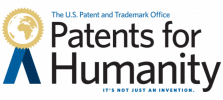Diagnostic Marker for Improving Treatment Outcomes of Hepatitis C
The National Cancer Institute (NCI) Division of Cancer Epidemiology and Genetics (DCEG) Immunoepidemiology Branch is seeking statements of capability or interest from parties interested in collaborative research to further co-develop a gene-based diagnostic for Hepatitis C virus (HepC, HCV).


